Renewed bid by developers for approval for residential development at historic Whalebones estate
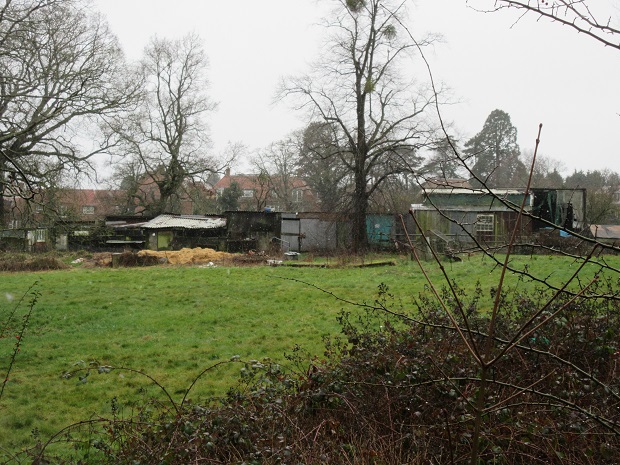 A fresh application to redevelop some of the woods and farmland at Whalebones in Wood Street, High Barnet — but this time with fewer new homes — is about to be made on behalf of the trustees of the estate.
A fresh application to redevelop some of the woods and farmland at Whalebones in Wood Street, High Barnet — but this time with fewer new homes — is about to be made on behalf of the trustees of the estate.
Hill Residential Ltd have scaled back their earlier plans by reducing the proposed number of new homes from 152 to around 120.
A public exhibition of the revised scheme is to be held on Wednesday 22 March at the artists’ studio next to Whalebones house (from 3pm to 8pm).
One of the fields where houses would have been built – at the junction of Wood Street and Wellhouse Lane – is now to be left as an open space.
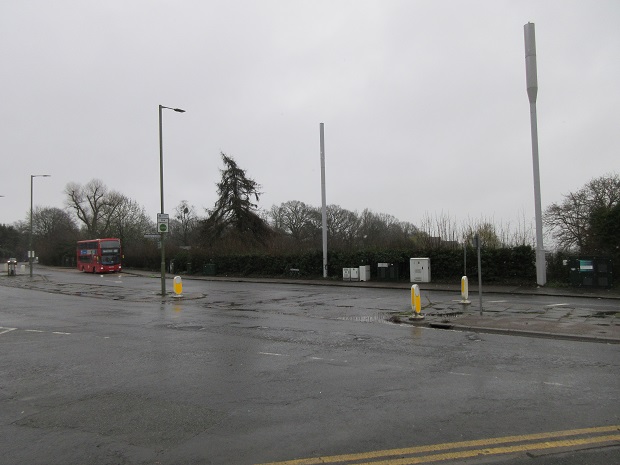
A new layout for developing the largest field (above), opposite the Arkley public house, has increased the distance between Wood Street and the new development.
New buildings on the western boundary of the development – next to the Elmbank estate – would be lower in height than under the previous plan.
Hill Residential’s revised proposals – made on behalf of the Gwyneth Cowing Will Trust and the Trustees of the Gwyneth Cowing 1968 Settlement – have already been discussed at the pre-application stage with Barnet Council.
Changes to the plans follow a planning inspector’s decision last November to reject an appeal against the council’s refusal to grant to grant permission for the construction of 152 homes.
The inspector concluded that whilst residential development would be suitable in principle in this location, the benefits would not overcome the weight attached to the harm to heritage assets – specifically, the impact on the Grade II listed Whalebones house (which is privately owned) and the Wood Street Conservation Area.
Hill Residential’s application generated an avalanche of objections: consultation with members of the Barnet Society indicated that 90 per cent were opposed to the scheme, along with 569 members of the public.
Currently, under Barnet’s draft local plan, Whalebones is zoned for up to 110 new homes – a target which the society says is still excessive and would mean an unacceptable incursion into the last remaining fields in the Wood Street Conservation Area and the loss of “a cherished remnant of Barnet’s historic rural hinterland”.
Robin Bishop, the society’s leading on planning and the environment, says that while accepting that some residential development might be necessary, it should be only a small fraction of the 152 homes originally proposed.
“We could support only a single-digit total – unless a more creative solution with more powerful community and environmental benefits could be offered.”
Mr Bishop argued that as Gwyneth Cowing, the last owner of the Whalebones woods and fields, had granted a lifetime tenancy for the use of Whalebones farm and its land, her wish to see continued agricultural or horticultural use should be respected.
This objective was supported by the society and while a stand-alone farming business might not be commercially viable, the Whalebones estate would be ideal for a non-profit-making city farm or other land-based project for educational and community benefit.
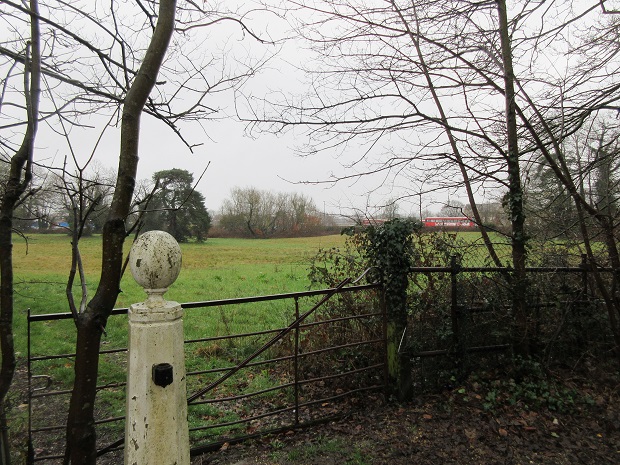
In their invitation to the exhibition of their plans, Hill Residential say they have withdrawn the plan to build houses on the field at the Wood Street-Wellhouse Lane junction (see above), but this would remain the site for the proposed relocation of a studio and joint premises for Barnet Guild of Artists and Barnet Beekeepers Association.
However, by removing the proposed housing, there would be an increased area for a public open space in the field between Wellhouse Lane (and the Barnet Hospital bus terminus) and Wood Street.
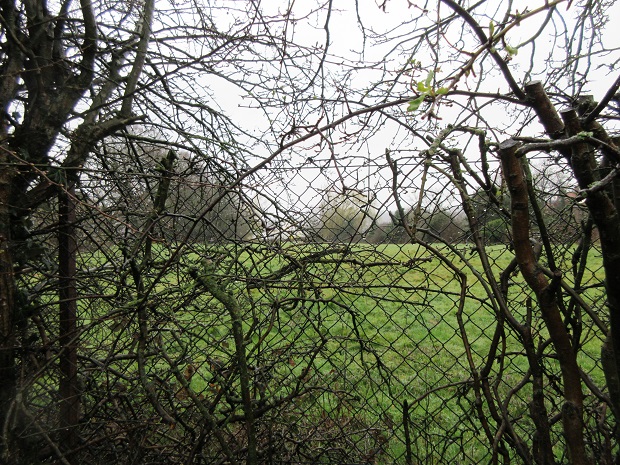
As a result of feedback from local residents, as well as the planning inspector, regarding the redevelopment of the largest field (see above) the distance between new homes and Wood Street and Whalebones house has been increased.
For further information about the latest plans for Whalebones visit www.whalebones-consultation.co.uk or email the project team at whalebones@kandaconsulting.co.uk
Another indication of the pressure for redevelopment in and around the Whalebones woods and fields is an application for a four-storey temporary building for offices for Barnet Hospital, to be erected at the top of Wellhouse Lane.
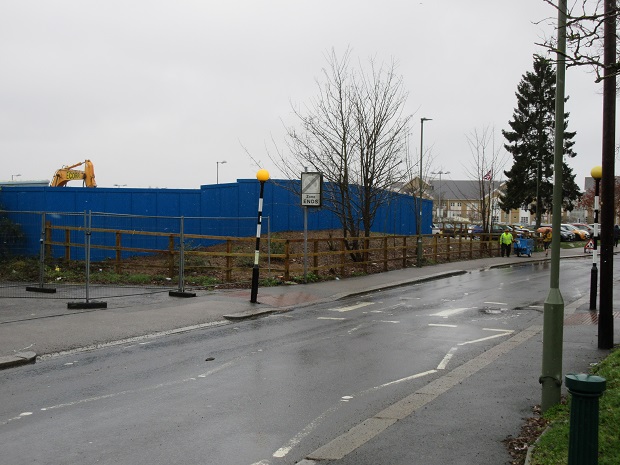
Royal Free London NHS Trust Foundation says new office space is needed for its business centre so that administrative staff can be accommodated in modern purpose-built premises which would free up space for inpatient facilities.
The Trust’s planning application states that the site – next to one of the hospital’s car parks – is “not located within or adjacent to a conservation area” but is directly south of the Wellhouse Lane boundary of the Wood Street Conservation Area.
Wood Street householders, who overlook the site say this wording is evasive and misleading: the site is almost surrounded by the conservation area boundaries and the erection of a four-storey building, at the top of the ridge along which Wood Street runs, will have a detrimental effect on the character of the surrounding streets and Whalebones woods and fields.
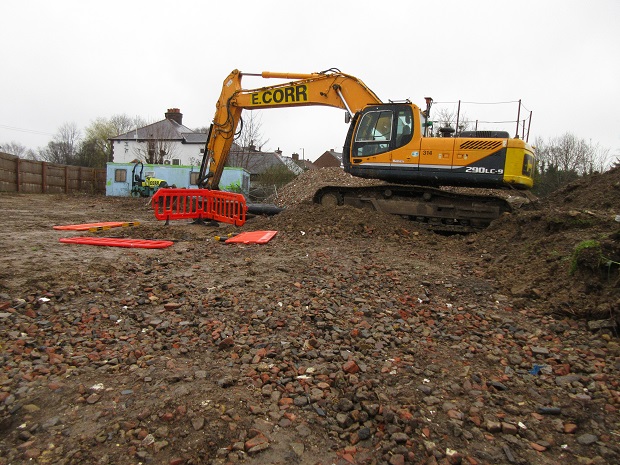
Contractors have already started work preparing the site for the four-storey office block.
Full details of the application (23/0426/FUL) can be seen on Barnet Council’s planning website. Any comments or objections to the scheme must be received by 21 March 2023.
1 thought on “Renewed bid by developers for approval for residential development at historic Whalebones estate”
Comments are closed.

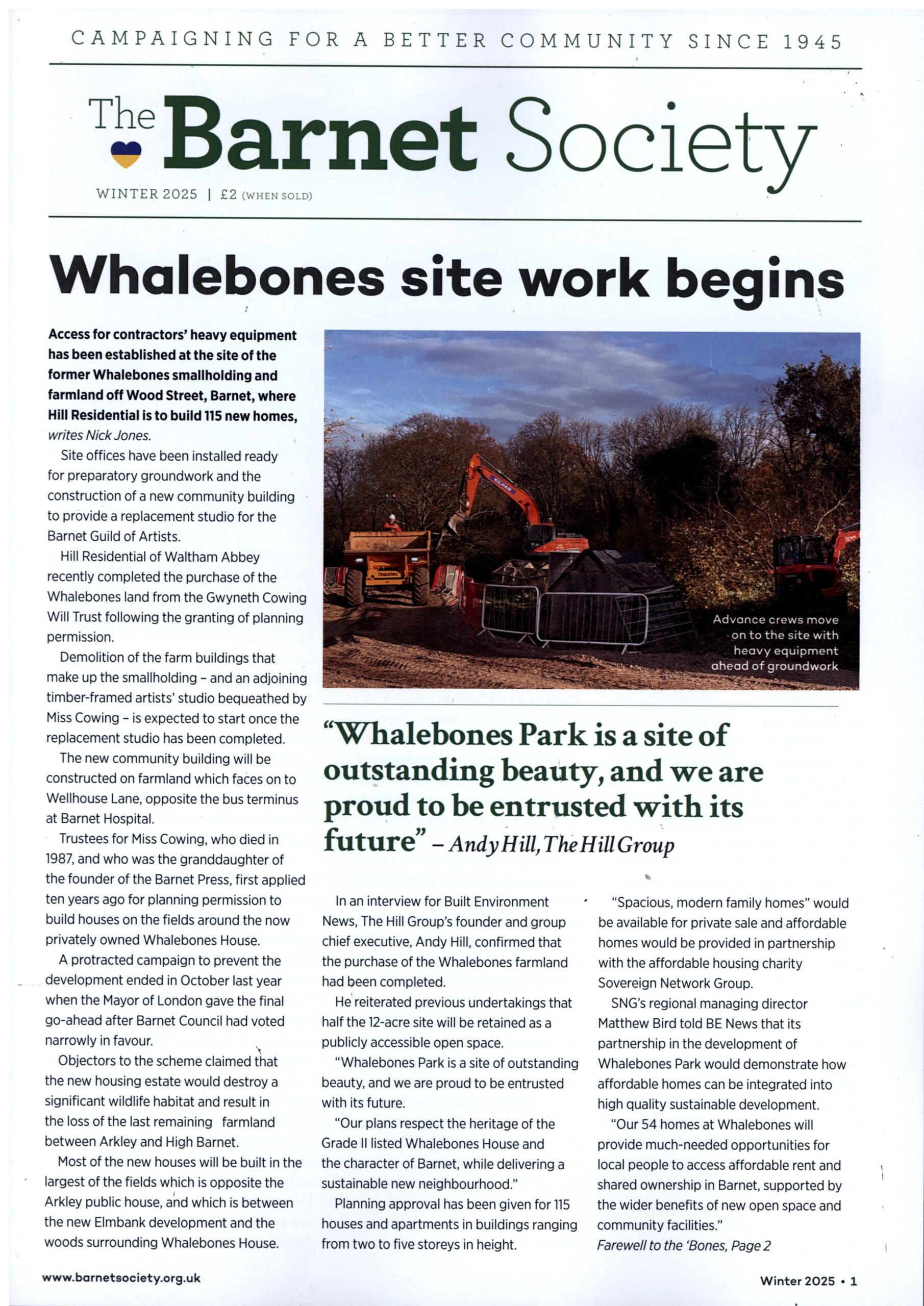
I’m afraid I can see the Barnet Council approving this one (maybe with some modifications) given how close the last voting was.